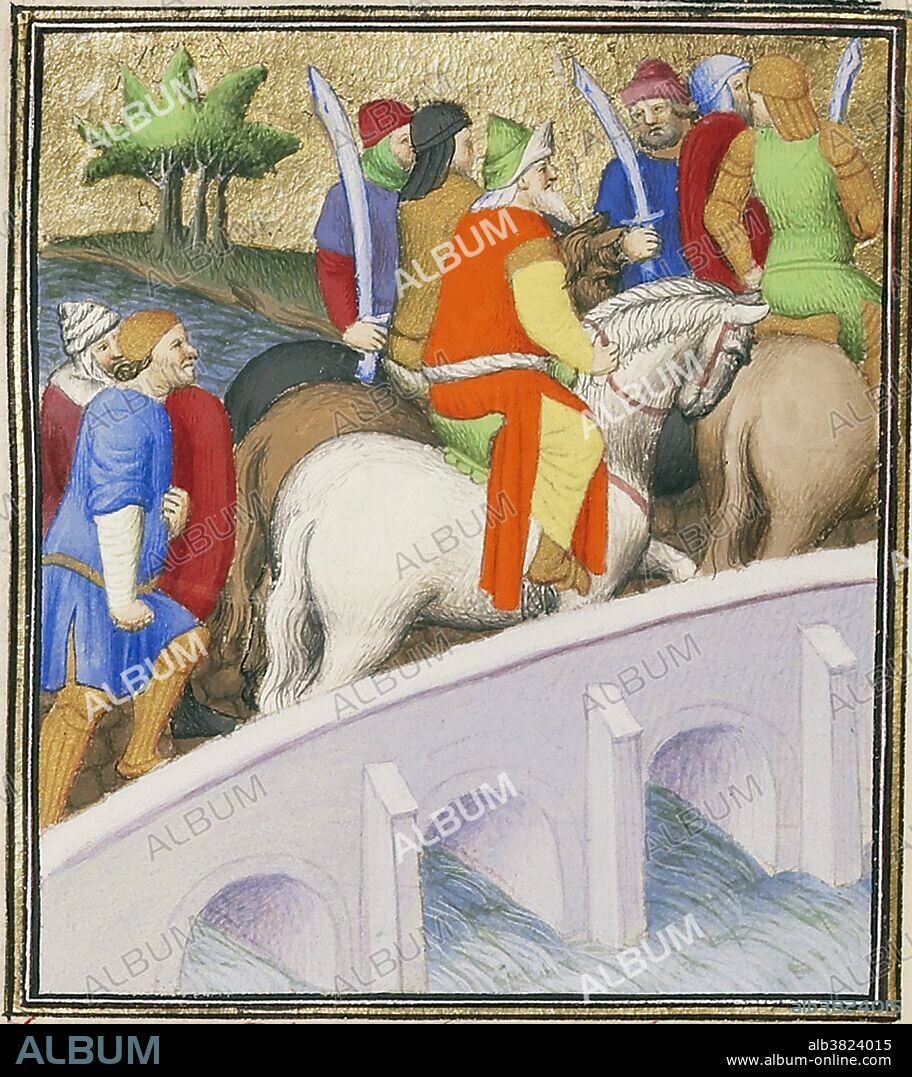alb3824015
Xerxes I and Persian Army Invade Greece

|
Zu einem anderen Lightbox hinzufügen |
|
Zu einem anderen Lightbox hinzufügen |



Haben Sie bereits ein Konto? Anmelden
Sie haben kein Konto? Registrieren
Dieses Bild kaufen

Titel:
Xerxes I and Persian Army Invade Greece
Untertitel:
Siehe automatische Übersetzung
"Xerxes, King of the Persians, Crosses a Bridge with His Army," an illustration by the Boucicaut Master from c.1413-1415. This image is meant to represent the immense bridge that Xerxes I or Xerxes the Great (519-465 BC) built to invade Greece in 480 B.C., linking Asia Minor with Europe. The entire Persian army, numbering upwards of 600,000 men, crossed it on foot. Historians today believe that Xerxes's "pontoon bridge" over the Hellespont was actually made of ships linked together. According to Herodotus, Xerxes's first attempt to bridge the Hellespont ended in failure when a storm destroyed the flax and papyrus cables of the bridges, so Xerxes ordered the Hellespont (the strait itself) whipped three hundred times and had fetters thrown into the water. Xerxes's second attempt to bridge the Hellespont was successful.
Bildnachweis:
Album / Science Source / Getty Research Institute
Freigaben (Releases):
Model: Nein - Eigentum: Nein
Rechtefragen?
Rechtefragen?
Bildgröße:
2894 x 3251 px | 26.9 MB
Druckgröße:
24.5 x 27.5 cm | 9.6 x 10.8 in (300 dpi)
Schlüsselwörter:
ARMEE • ARMY • BERÜHMT • BERÜHMTE PERSÖNLICHKEIT • GREECE • GRIECHENLAND • HEER • ILLUSTRATION • ILLUSTRATIONS • KOENIG • KÖNIG • MANN • NOTABEL • PERSON • PROMINENZ
 Pinterest
Pinterest Twitter
Twitter Facebook
Facebook Link kopieren
Link kopieren Email
Email
